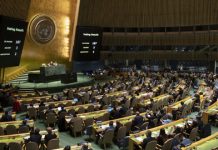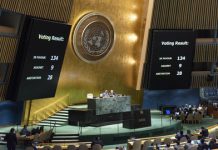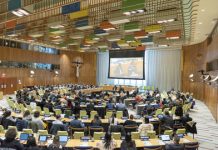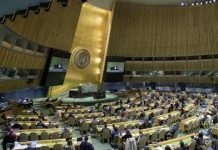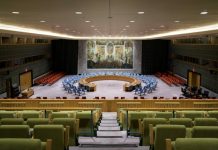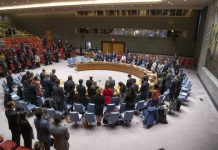“This Council’s mandate is maintenance of international peace and security, and there can be neither peace where people are starving, nor security where hunger drives conflict,” she said.
A recent UN report warned that the world’s most extreme food crises are driven primarily by armed conflict and violence, including famines in Gaza and Sudan – the first time such a hunger emergency has been declared in a single year.
Haiti, Yemen, the Sahel region in Africa and the eastern Democratic Republic of Congo (DRC) are among other areas of concern.
Invest in ending hunger
Ms. Mohammed noted that in an interconnected world, the cycle of hunger and conflict impacts other regions.
For example, the war in Ukraine disrupted grain imports, with consequences felt across several continents.
“Food itself has become a weapon,” she added. “Through deliberate starvation tactics, which we are seeing all too often, including recently in Gaza. But also through the systematic destruction of agricultural systems.”
Meanwhile, investment in military expenditure continues, estimated at nearly $22 trillion over the past decade, whereas “ending hunger by 2030 costs much less – $93 billion per year.”
At the same time, climate change is accelerating conflict-related hunger.
Humanitarian access vital
Humanitarian action is also essential to both prevent and address the crisis, said Joyce Msuya of the UN aid coordination office, OCHA.
“When humanitarian access is denied, hunger and malnutrition rise – often with devastating consequences for civilians,” she said.
Warring parties “must allow the rapid and unimpeded passage of impartial humanitarian relief” and ensure aid workers are free to carry out their operations.
“One month into the ceasefire in Gaza, the UN and our partners are seizing every opening to save lives,” she reported. “But access is still restricted by limits at border crossings, delays to aid convoys and bureaucratic impediments that slow the entry of vital supplies – and, in some cases, staff.”
Rising food prices
Today, nearly 673 million people across the world still go to bed hungry, according to Máximo Torero, chief economist with the UN Food and Agriculture Organization (FAO). Food insecurity is no longer just a humanitarian challenge but a matter of global peace and security, he said.
“When families cannot afford to eat, social contracts weaken. When farmers lose their crops to droughts or floods, and conflicts or wars, local markets falter and tensions flare,” he told ambassadors.
“When international food prices spike or price volatility becomes excessive, protests erupt in cities from Port-au-Prince to Cairo, and rigorous empirical research confirms this: higher global food prices and excessive volatility are directly associated with more social unrest events, with effects strongest in poorer countries and in urban settings.”
A high cost
The African Union (AU) Special Envoy for Food Systems highlighted the situation on the continent – “the epicentre of global hunger.”
Dr. Ibrahim A. Miyaki said 20.4 per cent of the population is food insecure, twice the global average. By the end of the decade, Africa will be home to over half of all hungry people on the planet.
War-torn Sudan is one of its gravest food emergencies, with 25.6 million people acutely food insecure, including 800,000 in famine conditions. Violence in eastern DRC has destroyed farms, displaced millions and left more than 25 million people going hungry.
“The cost of hunger in Africa is not only counted in numbers. It is felt in broken lives, uprooted communities, and lost futures,” he said.
‘A strategic and existential threat’
The UN Deputy Secretary-General noted that “the hunger-conflict nexus is a strategic and existential threat, and this Council must treat it as such.”
She highlighted the need for action on four fronts.
“First, humanitarian access must flow, ceasefires must hold, and international humanitarian law must be upheld,” said Ms. Mohammed.
She emphasised the need to build resilient food systems and promote stronger climate action, before concluding with a call for peace – “the only sustainable solution.”
“Let us choose to build a future where food is never again used as a weapon, where no child goes hungry because of war, and where food systems become engines of peace, resilience and hope rather than casualties of a conflict,” she said.
Source of original article: United Nations (news.un.org). Photo credit: UN. The content of this article does not necessarily reflect the views or opinion of Global Diaspora News (www.globaldiasporanews.com).
To submit your press release: (https://www.globaldiasporanews.com/pr).
To advertise on Global Diaspora News: (www.globaldiasporanews.com/ads).
Sign up to Global Diaspora News newsletter (https://www.globaldiasporanews.com/newsletter/) to start receiving updates and opportunities directly in your email inbox for free.






